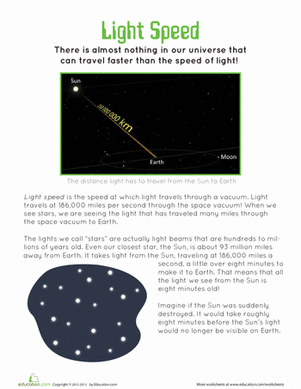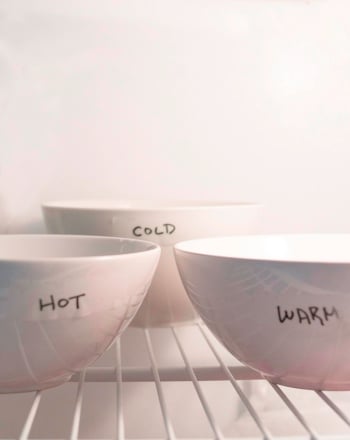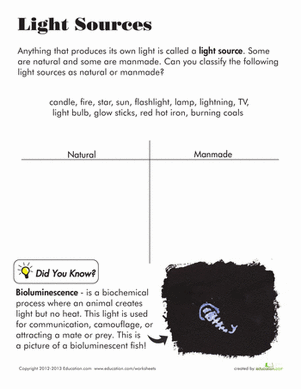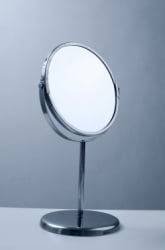Science project
Does Ultraviolet (UV) Light Pass through Some Colors More than Others?
Talk It Over
Light travels in waves. The waves have different lengths called (no surprises here!) wavelengths. Different colors of light have different wavelengths. Red light, for example, has a longer wavelength than blue light. Ultraviolet (UV) light has a wavelength so short, we can't see it.

Get
- 4 small juice glasses
- Measuring cup
- Water
- Red and blue food coloring
- Towel
- 4 pieces of Sunprint paper*
- Tray
- Ballpoint pen
- Sunny spot outdoors
- Access to a black-and-white photocopy machine
- Your grayscale (See "How to Make a Grayscale" in Part III.)
Go
- Work indoors, away from bright light. Put ¼ cup of water in each of the juice glasses.
- To the first glass, add 2 drops of blue food coloring. To the second, add 2 drops of red. To the third, add 1 drop of red and 1 drop of blue to make purple. Add no color to the water in the fourth glass.
- Swirl the water in the first three glasses to mix the food coloring thoroughly. Careful. Don't spill.
- Make sure the bottoms of all three glasses are dry. If they aren't, dry them with a towel.
- Place 4 pieces of Sunprint paper on the tray, blue side up. With the ballpoint pen, label the pieces in small letters in a corner: "blue," "red," "purple," and "clear."
- Set the glasses on the paper. Match the color of the water to the label you wrote on the paper.
- Carefully carry the tray out to a sunny spot. Don't spill. Turn the tray so that shadows don't fall on any of the papers.
- Leave in the sun until the papers turn white—between 1 and 5 minutes. Take the papers indoors to a sink and rinse them in water for 1 minute.
- Allow the papers to dry completely before you go on.
- Place the papers on the black-and-white photocopier and make a copy. Compare the spots on the papers to your grayscale. From your grayscale, pick the number of the gray value that best describes the spot on your Sunprint paper.


Stay Safe
Nothing in this experiment can hurt you, but be careful with food coloring. It can stain your skin and clothes.
Go Easy
The "Go" procedure will work for you.
Go Far
This experiment works because ultraviolet light from the sun changes Sunprint paper from blue to white. Then the water reacts with the paper, causing the white (exposed to UV) areas to turn dark blue. Where UV is totally blocked, the paper turns white. Partial exposure to UV results in a shade of blue. The darker the blue, the more ultraviolet light got through to the paper.
You can expand this experiment by making solutions and testing other colors. Try green, yellow, and colors you mix, such as orange. Also, experiment to see whether the intensity of the color makes a difference. Compare the gray values of the spots that appear beneath solutions made with 1, 2, 3, and 4 drops of a single color.
Show Your Results
Put gray values in a data table like this for "Go" and "Go Easy":
| Color | Gray Value |
|---|---|
| Red | |
| Blue | |
| Purple |
For "Go Far," add other colors to the table. Make a separate table to compare different intensities of a single color.
For all projects, display your Sunprints and your photocopies. Make a bar graph showing how the gray values of the spots compare. State a brief conclusion and try to explain any differences you see.
Education.com provides the Science Fair Project Ideas for informational purposes only. Education.com does not make any guarantee or representation regarding the Science Fair Project Ideas and is not responsible or liable for any loss or damage, directly or indirectly, caused by your use of such information. By accessing the Science Fair Project Ideas, you waive and renounce any claims against Education.com that arise thereof. In addition, your access to Education.com's website and Science Fair Project Ideas is covered by Education.com's Privacy Policy and site Terms of Use, which include limitations on Education.com's liability.
Warning is hereby given that not all Project Ideas are appropriate for all individuals or in all circumstances. Implementation of any Science Project Idea should be undertaken only in appropriate settings and with appropriate parental or other supervision. Reading and following the safety precautions of all materials used in a project is the sole responsibility of each individual. For further information, consult your state's handbook of Science Safety.













